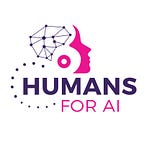How AI Chatbots and Virtual Assistants Will Transcend the Current Constructs of Education
By Peyton Wang
In recent years, chatbots have improved the efficiency of businesses across the world through streamlining communication with consumers. For example, we can message a Starbucks chatbot to order a refreshing beverage or ask a Lyft chatbot to request a ride using Facebook Messenger, Slack, or Amazon Echo. Additionally, virtual assistants have surged in popularity, with people using Siri to find nearby restaurants or Google Home to turn off their lights.
While chatbots and virtual assistants may seem similar, chatbots are linear in their communication, in which the chatbot responds to standard questions and does not take in user feedback. Both chatbots and virtual assistants use Natural Language Processing (NLP), Machine Learning, and Deep Learning. This enables them to converse with the user, utilize search engines and websites, form user-oriented responses, and detect emotions, among other things. These advantages of both chatbots and virtual assistants can be used to improve education by enhancing the experiences of students, professors, and school administrators.
Individualized Learning and Experience for Students
Chatbots can respond to students immediately, at any time of the day. If a student needs to ask their teacher a question in the middle of the night, a chatbot can answer them within seconds. Depending on how it is programmed, a chatbot can answer a student in an empathetic manner. This can encourage students to ask more questions without fearing judgment for the quantity or content of their inquiries. Additionally, virtual assistants can create a customizable experience by adjusting teaching methods to individual students as well as helping students focus on their areas of improvement. Many companies, including Content Technologies and Carnegie Learning, are in the process of developing online platforms involved in personalized learning, with the help of AI. Based on student response and expression, these virtual assistants can tailor their communication style to each student. Furthermore, they can identify the weaker learning areas of a student, then use this information to provide the student with specific examples and practice problems.
Improving Efficiency with Virtual Teacher Assistants
Additionally, chatbots and virtual assistants can help reduce the workload of teachers by responding to student inquiries and grading assignments or exams. Furthermore, for commonly-asked questions, teachers need not repeat themselves multiple times, but rather program a chatbot to answer each student. Essentially, chatbots and virtual assistants can fill the role of a teaching assistant, but can complete tasks much faster and more efficiently.
Institutional Implementation of AI
Some institutions have started using chatbots and virtual assistants. Starting last January, Staffordshire University introduced Beacon, a chatbot that can check in on students, remind them about upcoming events, recommend clubs and activities, connect them with tutors, and answer day-to-day questions regarding campus facilities. At David E. Williams Middle School, several students collaborated with Witlingo’s Buildlingo, which enabled virtual assistants such as Google Home or Amazon Alexa to answer frequently-asked questions for incoming high school students. These chatbots and virtual assistants facilitate communication between parents and school administrators, who are often bombarded with questions from parents, especially when their child is transitioning to the school.
Increasing Student Retention and Participation in MOOCs
Over the past few years, the number of massive open online courses (MOOCs) — online classes accessible to all — have increased. At the end of 2018, MOOCs garnered the interest of 101 million learners overall, with a total of 11,400 courses being offered. Despite the fact that the number of MOOCs have drastically increased in the past year, the number of new users has decreased by 23 million. Furthermore, MOOCs have been proven to be ineffective, resulting in low completion rates and student retention. A study conducted by the University of Pennsylvania’s Graduate School of Education in 2013 found that MOOC users averaged a completion rate of 4%, with only half of the registrants viewing at least one lecture.
Student interactivity in MOOCs can be increased with the help of chatbots and virtual assistants. In 2016, Professor Ashok Goel developed the virtual teaching assistant Jill Watson for his class on Knowledge-Based Artificial Intelligence at Georgia Tech. Jill Watson was programmed to respond to student questions in a class discussion forum. Compared to residential classes, Jill Watson increased student levels of participation. Additionally, the study suggested that Jill Watson lessened the workload for teachers.
Conclusion
For the past century, the education system has not experienced any major changes, with institutions continuing to follow a standardized and general curriculum. However, artificial intelligence has the ability to improve education for the better. Although the use of chatbots and virtual assistants at institutions are still in its early testing stages, they encourage students to ask questions, enable instantaneous and efficient communication, and create a personal learning experience.
About the author:
Peyton is a rising sophomore at Wellesley College and a summer intern at Humans For AI, a non-profit focused on building a more diverse workforce for the future leveraging AI technologies. Learn more about us and join us as we embark on this journey to make a difference!
